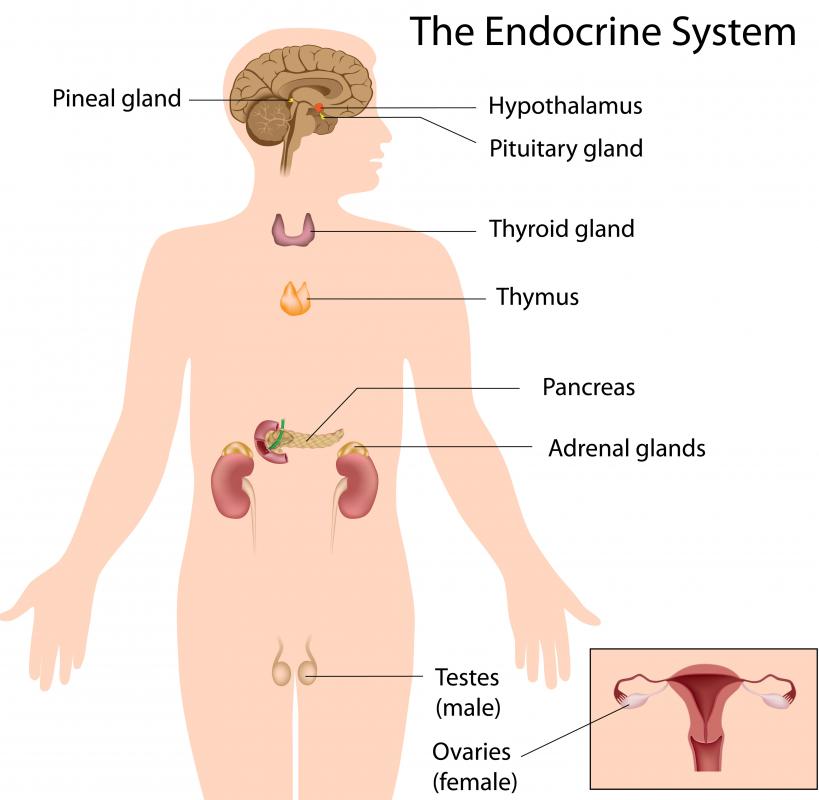At WiseGEEK, we're committed to delivering accurate, trustworthy information. Our expert-authored content is rigorously fact-checked and sourced from credible authorities. Discover how we uphold the highest standards in providing you with reliable knowledge.
What Are the Different Endocrine System Hormones?
While present in very small amounts, numerous types of endocrine system hormones are being transported in the blood all of the time. Steroids and thyroid hormones are circulated by plasma proteins, while water-soluble peptide hormones are moved by diffusion into the blood. Neurons produce neurohormones for release into the surrounding interstitial fluid, which are eventually put into the circulatory system. Constantly taken up by target cells and organs, hormone molecules may be removed and deactivated by the liver to be secreted by the kidneys in the form of urine.
Steroid hormones are secreted by the testes, ovaries, and adrenal cortex, the superficial layer of the adrenal glands located on top of the kidneys responsible for the release of steroid hormones such as cortisol and the male hormones testosterone and androstenedione. Female endocrine system hormones include estrogen and progesterone which are secreted by the ovaries, the reproductive organs necessary for production and release of ova, the female sex cells. In males, the testes secrete testosterone, a steroid important to the development and maintenance of male sex characteristics and structures including the prostate, as well as the production of sperm. Sometimes male endocrine system hormones are abused by athletic competitors in the form of synthetic anabolic steroids for the purpose of increased development of muscle, endurance, and strength.

Endocrine system hormones belonging to the peptide category are water-soluble molecules of varying sizes. Short neuropeptide chains, such as antidiuretic hormone (ADH) and oxytocin, are manufactured by the hypothalamus within neuroendocrine cells and consists of nine amino acids, seven of which are the same in each hormone. Even though they share many of the same amino acids, oxytocin and ADH function differently. Longer peptide hormones such as adrenocorticotropic hormone (ACTH), calcitronic, and glucagon encompasses approximately 30 amino acids each. Proteins are also commonly placed in the peptide group and include insulin, produced by the pancreas to metabolize carbohydrates and lipids, as well as thyroid-stimulating hormone (TSH) and growth hormone, both of which are secreted by the pituitary gland.

Derivatives of amino acids, monoamine hormones such as the thyroid hormones are made from amino acids tyrosine and iodide. Epinephrine, which is also referred to as adrenaline, is produced by the medulla of the adrenal glands and consists of modified tyrosine as well. Important to maintaining the body's sleep-wake cycle, melatonin is synthesized from the amino acid tryptophan in the pineal gland. Other monoamines include the neurotransmitters norepinephrine, dopamine, and serotonin.
AS FEATURED ON:
AS FEATURED ON:












Discuss this Article
Post your comments